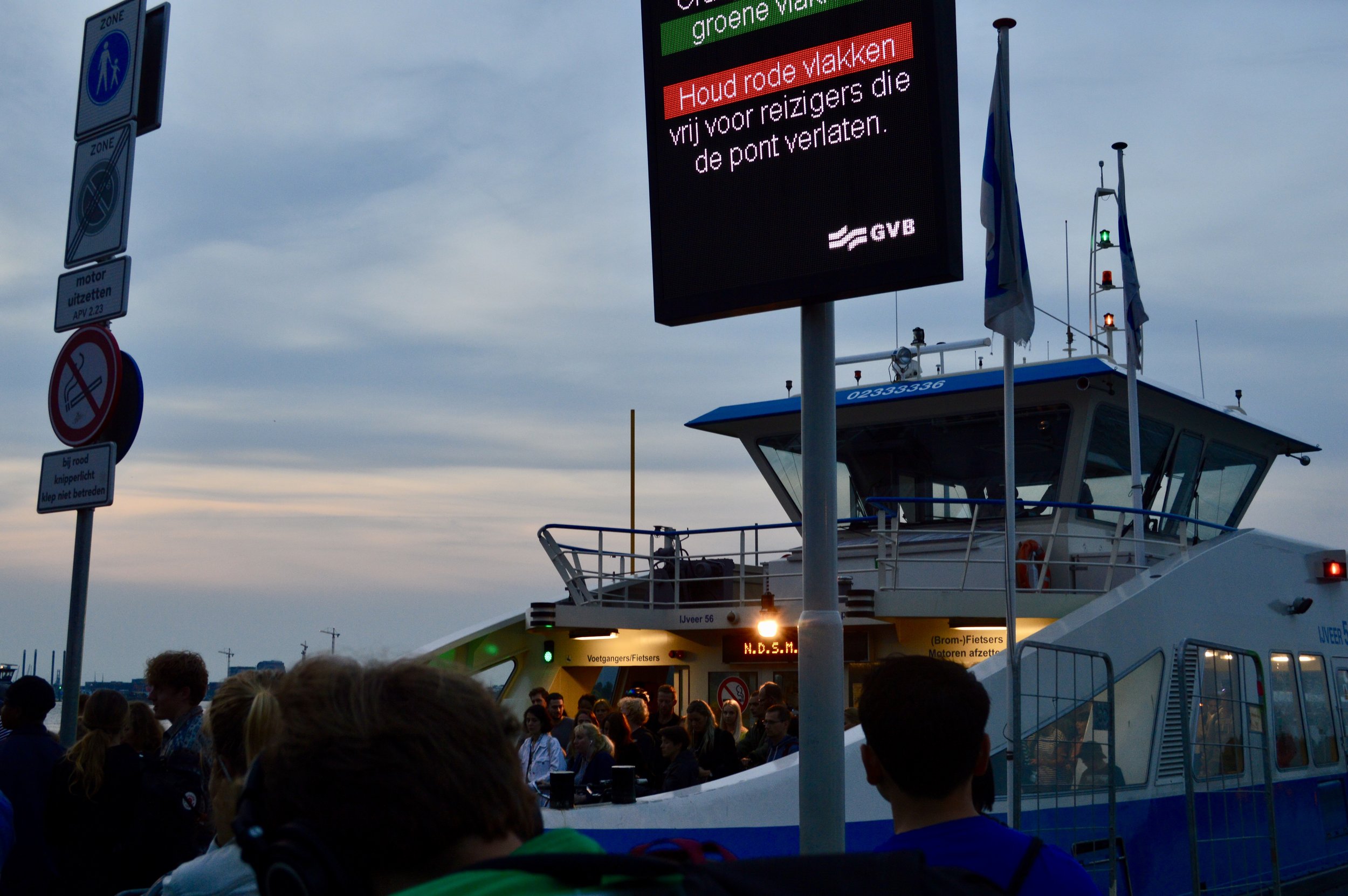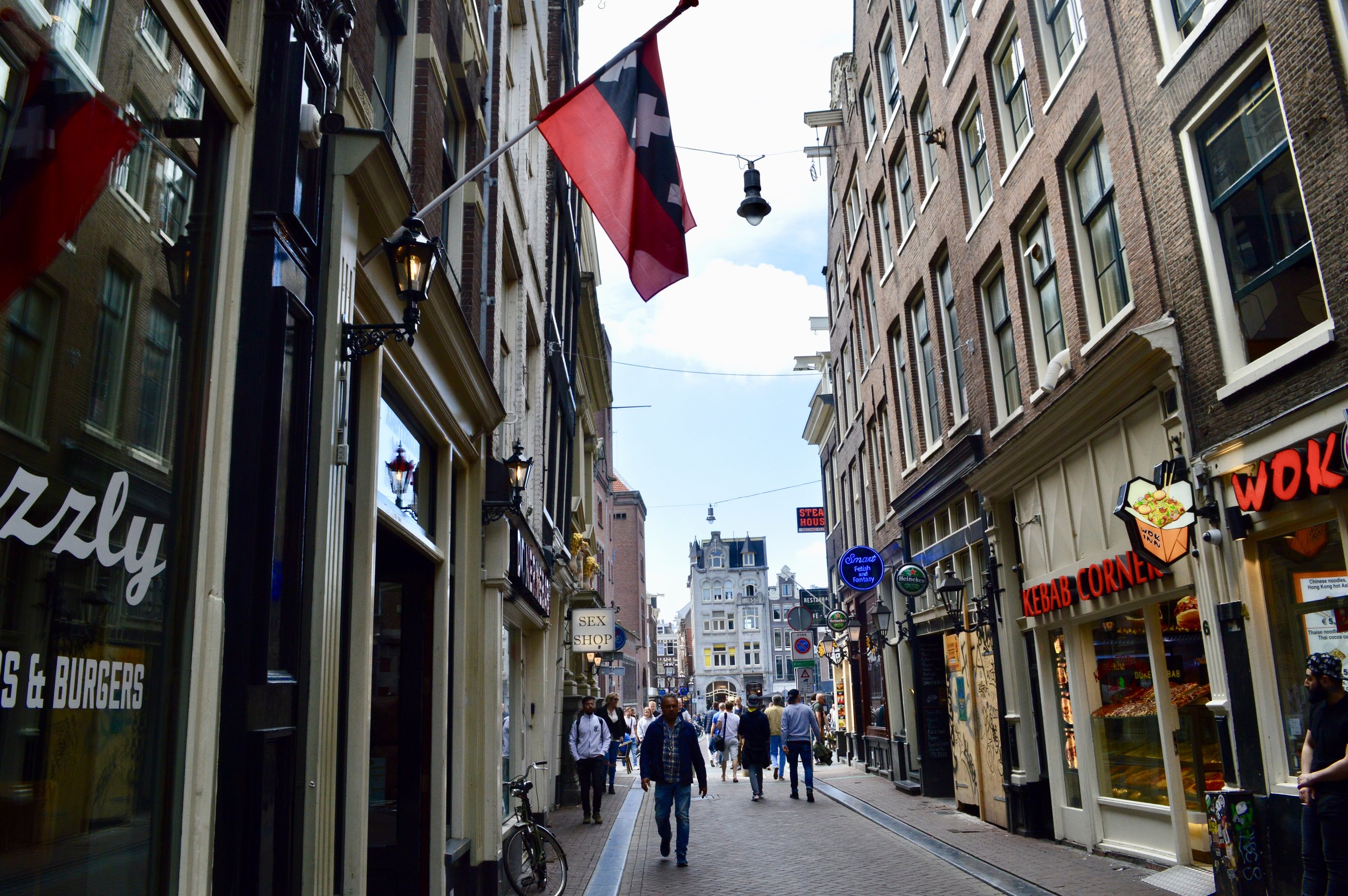Today is my last day of my first trip to Amsterdam. I’m not sentimental: I’ll be back. This is where my adventure begins and ends. I’m more interested in the beginning and ending, these two ends of the spectrum, which Amsterdam itself seems to embody.
this is charming
Amsterdam, with its metropolitan population of 2,410,960, is the capital of the Netherlands, although it is not the seat of its government (that distinction belongs to The Hague). It is, however, its cultural capital (thanks to local showoffs Rembrandt and Van Gogh), as well as the site of the headquarters of a slew of major technology companies like Netflix, Tesla, and Uber.
big Amsterdam (corporate headquarters not pictured)
But before it was ranked The 2nd Best European City to Live in by the Economist Intelligence Unit, Amsterdam was just a wee fishing village, where people of all ages but mostly those <30 enjoyed the 12th century. The city rose to prominence in the 17th century as a major port that got rich off a series of tariffs, trade deals, and the world first stock exchange (home to the famous “tulip mania” that burst in dramatic fashion). During the Dutch Golden Age, the city expanded and a series of canals (now iconic and UNESCO protected) were dredged.
a plus for these canals is you can sit along the banks and eat bread and stuff
So, the Amsterdam of today? It’s a city renowned for the Rijksmuseum, Royal Palace, Anne Frank House, Van Gogh Museum, Red Light District, and “coffeeshops,” which are not what you think.
I’m writing this post from a “coffeeshop” right now. I came for the WiFi and ordered an espresso, and was subsequently carded. Confused, I handed over my I.D., only to learn that coffeeshops are “establishments where the sale of cannabis for personal consumption by the public is tolerated by the local authorities” (thanks Wikipedia). The fact that espresso and iced coffee were the only two coffee drinks on the menu of an establishment with “coffee” in its name surprised me. But hey, the vibe was chill, so ¯\_(ツ)_/¯
That’s just one of many strange contradictions I’ve encountered in the city. Another one is this: Amsterdam is a city interlaced with water, and yet there are more bicycles here than I have ever seen in my life. Seriously. To get from my hostel in Noord to Amsterdam proper I took the ferry, whose deck looked like the starting line of the Tour de France, except with more ripped jeans and beat-up sneakers.
the ferry
I actually got kinda-sorta hit from behind by a bicycle one night right as I was taking this photo:
camera is unscathed
So that happened. Another peculiarity about the city is that Noord, North Amsterdam, where I stayed and which lies across IJ Bay, is a lot less developed, and still has a lot of quant homes that sit on the banks of the Noordhollandsch Kanaal. I actually ran out along the canal on my first day in Amsterdam (after a trans-Atlantic flight on which I didn’t sleep) and was approached by a friendly rollerblading figment-of-my-sleep-deprived-imagination who turned out to be a very real 71 year-old-man named Gerard. Gerard rollerbladed with me while I ran and gave me a whole tour of the North, including passing his childhood home, which was pretty and looked exactly like what I thought it would (small, two-story townhouse).
a tamer part of De Wallen
Amsterdam Central, including De Wallen, the famous Red Light District, has been developed in a way that most cities have: It’s got McDonalds and Starbucks and H&M and all that. But it also has an absurd number of “headshops,” basically a Juul-ers heaven that in addition to sweet vaps, sells everything from Weed Ice Cream to Weed Bath Soap (I’m not kidding). There’s also the legal prostitution, which is a bit weird — and I’m not being prudish here really. It’s just strange to walk by windows full of half-naked women, many of whom try to get your attention, and some of whom families — also out walking around in the daylight — wave at. It’s a strange spectacle, and, if anything, De Wallen feels less like a vestige of a sailing past and more the result of capitalism pushing one section of town towards cornering the market on pot and sex-for-sale.
This isn’t to hate on Amsterdam. It’s a really cool city, with a lot to offer. In many ways, the strange surprises it contains happen to be one of its biggest selling points. I mean right next to the Red Light District, which everyone has heard of, was the Oldest Chinatown in Europe, which nobody (as far as I know) has heard of.
To underscore the strange clash of opposites, I’ll leave you with this photo:
somewhere in De Wallen
Next stop: Stockholm, where the sun only kinda-sorta-sets and nerds rule.







